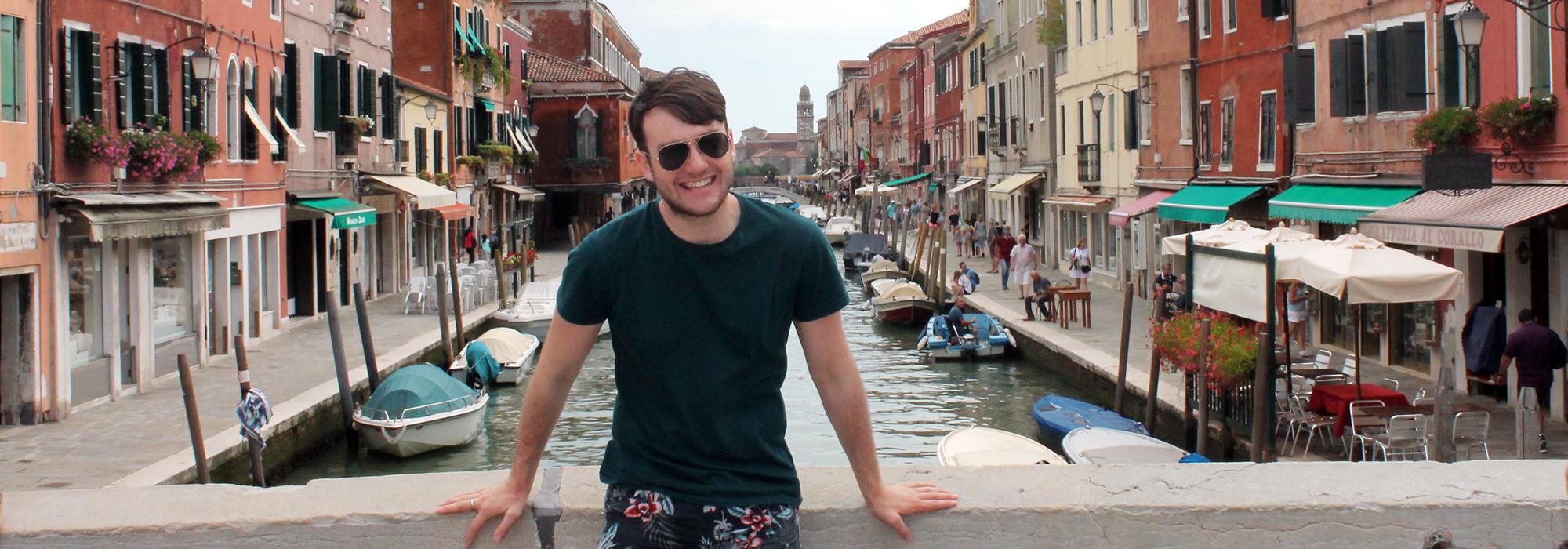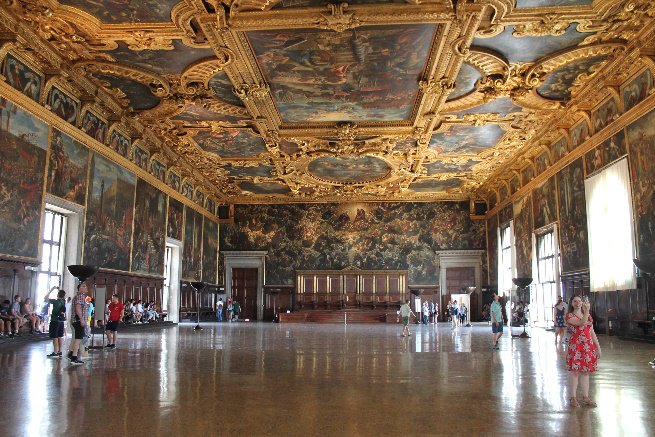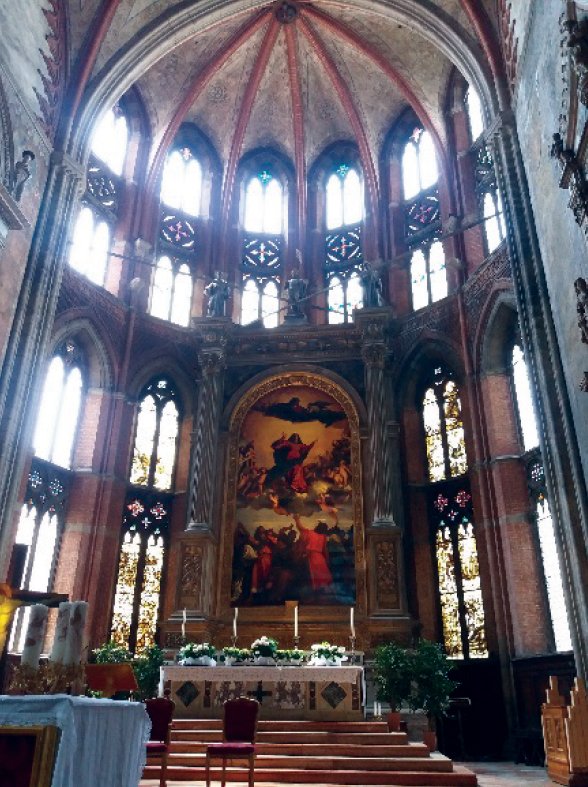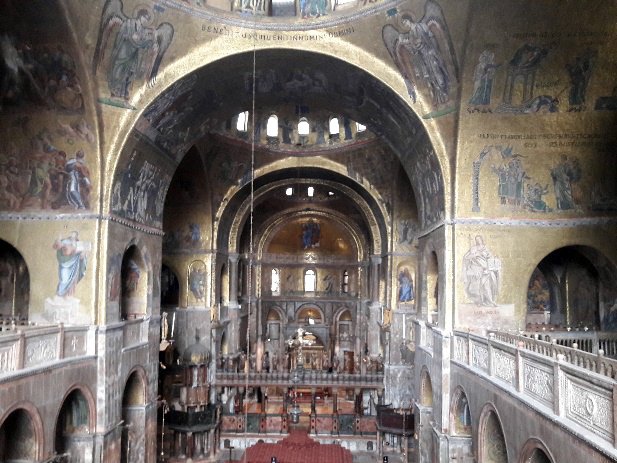
Report: A study visit to Venice
In July 2018 History & Politics undergraduate Jake Woods spent five days in Venice on a study visit funded by an Undergraduate Travel Grant.

I began my trip with a visit to the Doge’s Palace which was the political heart of the Renaissance Venetian Republic. I was able to get a sense of the scale and organisation of the government by visiting the hall of the Great Council, the supreme decision-making body. Also useful was to see how this room linked with the room occupied by the other bodies of government such as the Council of Ten. Being able to see the layout has been invaluable in class when discussing how the different branches interacted. Moreover, the hall was decorated by the Bellini brothers and Titian which truly gave an appreciation of the artistic skill and time required to complete such a task. Subsequently I have had a chance to read the original documents of the Great Council that commissioned the works.

This magnificent church situated near the area I was staying in is a prime example of how the Renaissance cannot purely be considered a flourishing of secular ideas and art. The proliferation of ecclesiastical art created by the great masters of the day is not purely down to patronage. The piece pictured is the most prominent within the church and the largest altarpiece in the city; it was painted by Titian between 1515-18 and represents a high point of Renaissance art featuring the Assumption of the Virgin. Again it was excellent to get a sense of the scale and the original placing of these artworks, especially as this is the church in which Titian was eventually buried.

My final stop was the Basilica of St Mark. If the Palazzo Ducale was the political heart of the city then St Mark’s is certainly the spiritual. St Mark’s church and square acted as a stage for both political and religious ceremony during the Renaissance. It is featured in many of the most prominent procession paintings, especially those of Bellini. His painting of the procession of the Vendramin family displays their status within the patrician class of the city. Moreover, the roof and domes were carefully restored by Jacopo Sansovino after his flight to Venice following the sack of Rome, showing the mobile nature of artists in this time.